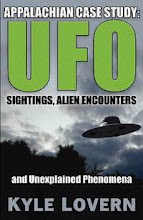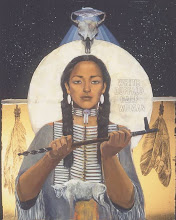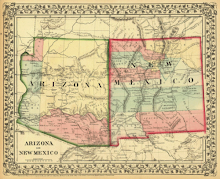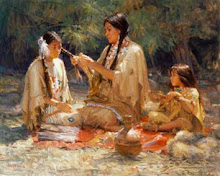Saturday, July 18, 2020
Well-known ‘Mothman’ case also about dedicated local journalist, Native history?
By Steve Hammons
The so-called “Mothman” reports around the town of Point Pleasant, West Virginia, in 1966-67 have been widely portrayed in books, TV shows and a popular Hollywood movie.
Real-life researcher and writer John Keel went to Point Pleasant to investigate, where he worked closely with local newspaper reporter and columnist Mary Hyre of The Athens Messenger daily newspaper based in nearby Athens, Ohio. Athens was founded in 1797 and is home to Ohio University, chartered in 1787 and founded in 1804.
Hyre had been following up on reports from local citizens about UFOs seen in the sky (now referred to as “UAP” by the U.S. Navy – “unidentified aerial phenomena”). Then, reports of a large, unusual being also started coming in.
Some Point Pleasant locals reportedly wonder if various odd occurrences in the area are linked to the deeper history there. Long before the UFOs and Mothman allegedly showed up in the area, the October 1774 Battle of Point Pleasant or Battle of Kanawha took place.
Native Shawnee, Mingo and other Indian allies were defeated by colonial militia with British Redcoat involvement in this important battle. The father of Shawnee leader Tecumseh was killed in the battle when Tecumseh was just a boy. Shawnee Chief Cornstalk is said to have asked the Great Spirit for a curse on the land there.
WHERE THE WATERS MINGLE
In the 2002 Hollywood movie version, “The Mothman Prophecies,” based on Keel’s 1975 best-selling book of the same name, Richard Gere plays the Keel-like character. Hyre seems to be represented by actor Laura Linney who plays not a local community newspaper reporter, but a Point Pleasant city public safety peace officer.
The 2019 movie “Dark Waters” starring Mark Ruffalo looks at this same region along the Ohio River. The 2019 best-selling book “The Pioneers” by historian David McCullough also explores the area. In fact, McCullough focuses on Athens and the founding of Ohio University, now home of the respected Scripps College of Communication and E.W. Scripps School of Journalism.
Hyre worked at The Messenger’s news bureau covering Point Pleasant and the surrounding region. She was part of the community and her newspaper column “Where The Waters Mingle” was widely read. Point Pleasant is at the confluence of the Kanawha and Ohio Rivers.
In 1966, Hyre was covering the normal kinds of community events and news topics when reports started coming in of unusual lights in the sky. These reports were from reliable citizens. So, she started following up, conducting interviews with locals about what they saw, and writing articles about the accounts and observations being reported to her.
When Keel arrived in Point Pleasant to investigate, he and Hyre worked together to try to understand and document the unusual reports and unfolding developments in the area. There would be dozens of UFO or UAP reports in the area, maybe hundreds.
These reports of odd phenomena ended up continuing for more than a year into 1967. There were also claims of pets and livestock being mutilated.
And then, on Dec. 15, 1967, the Silver Bridge from Point Pleasant across the Ohio River collapsed. Thirty-one cars plunged into the cold river, 46 died and nine were injured.
Hyre covered it all, as painful as it was for her. Her role as a dedicated journalist and trusted neighbor to the people of the area is a part of the Mothman story that is often overlooked.
Hyre passed on in February 1970 at age 54 after a brief illness. She had worked at The Athens Messenger for 27 years and had served the people of the area as a trusted journalist.
On Sunday, March 30, 1975, The Messenger ran an article with the headline, "Mason 'Mothman Prophecies – Author Keel Dedicates Book to the Late Mary Hyre.” The article recounted how Hyre and Keel joined forces to gather information, attempt to gain understanding and inform their readers.
REAL ESTATE CHANGES HANDS
Could Hyre, Keel and the residents of the region have been dealing with, in some mysterious way, the troubled history of that area – and of our country?
According to some accounts, Shawnee Chief Cornstalk called upon the Great Spirit to curse the land around Point Pleasant because of the treachery and harm caused to the Shawnee and other Indians of the region.
European colonists from Virginia and other colonies were pushing further into Native lands. And some of these colonists and their militias were having increasingly strained relations with their British overlords and Redcoat troops.
Tecumseh, whose father was killed at the 1774 Battle of Point Pleasant, would grow into a leader who would try to unite Native people of the region. He unified many Indian tribes in an alliance to establish a joint-tribal territory.
But, in the 1794 Battle of Fallen Timbers in northwestern Ohio, Tecumseh and his alliance were defeated by frontier militias and forces of the new government formed by the European colonists to the east – now called the United States of America.
The Shawnee were eventually pushed out of all of Ohio. To Kansas, to Oklahoma, to the winds. The Miami or Myaami in southwestern Ohio and Indiana were also forced west to Oklahoma.
The Cherokee, just to the south, intermingled and intermarried with Scottish, Scots-Irish and Anglo pioneers during the 1700s. Many mixed-ethnicity families in the region were created. These cultures merged and a unique population developed. Some Cherokee took up the ways of European colonists and new “Americans.”
Yet, the Cherokee, including many mixed-ethnicity Cherokee, were rounded up, forced into harsh detention camps, and forced west on various versions of the “Trail of Tears” around 1838-39, when thousands died, including babies, children and the elderly.
A so-called “Cherokee diaspora” took place – Cherokee people dispersed far and wide, though many remained close to the homeland in the southern Appalachian mountain area. And many had adopted the Anglo and Scottish names from their fathers and grandfathers, and were as white as they were Cherokee, or more white than Cherokee in many cases. Over the generations, these families intermarried into the larger population of the region and throughout the U.S.
Is this complex and difficult history related in any way to the UFO, UAP and Mothman incidents in Point Pleasant in 1966-67? Were Mary Hyre and John Keel actually encountering something related to a deeper history, an ancient history of that area?
After all, long, long ago, Shawnee, Cherokee and other Native tribes and cultures had been there for thousands of years. They lived in the deep forests and hills. They lived on, traveled on and fished in the many streams and rivers, including the majestic waterway later known as the "Ohi yo" or "Ohiyo."
And generations upon generations were born, lived and passed on in the region “Where The Waters Mingle.”
(Related articles “Storytelling affects human biology, beliefs, behavior” and “Reagan’s 1987 UN speech on ‘alien threat’ resonates now” are posted on the CultureReady blog, Defense Language and National Security Education Office, Office of the Undersecretary of Defense for Personnel and Readiness, U.S. Department of Defense.)

























































































































































































